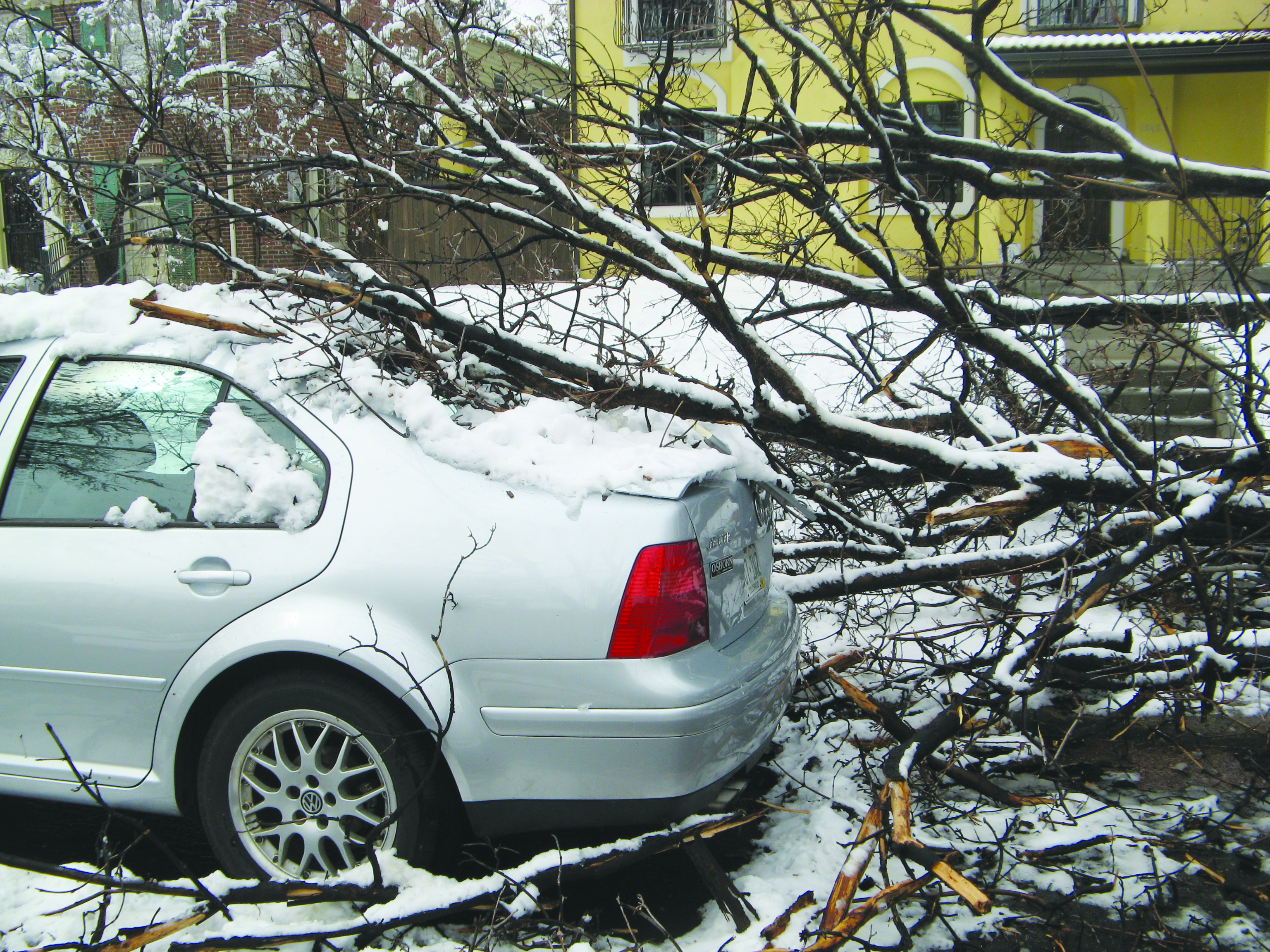‘The Trees Are Old; They’re Grandpas’
Cara DeGette
Deloris W. Gipson woke up the snowy morning of April 3 with a phone call: the old silver maple that had been growing at her house on 23rd Avenue at Hudson Street had broken off its stump and was laying across the street. The tree had been growing there since long before Gipson got married and moved into her house in 1971.
“I’m just glad it didn’t fall on anybody,” she said, as the fallen tree was being cut into stumps and hauled into a truck to be removed.
All over Park Hill that morning, neighbors woke up to fallen trees and tree limbs from wet and heavy snow the night before. Like Gipson, they were faced with damage to cars and property.
The scenario is not uncommon.
“Many of the trees are old; they’re Grandpas,” says City Arboreal Inspector Bill Cassel. “The average home in Park Hill was built 100 years ago.”
In the early 1900s, as part of a program to beautify the streets of Denver, free tree seedlings were given to residents to create great canopies of tree-lined streets. The American elms and silver maples that were so popular then are not native to Park Hill or to Colorado, and so don’t have the life span of 150-200 years that they have back east.
“At our climate and elevation we can’t expect to get their life expectancy,” Cassel says.
What can be done? Cassel recommends watering, fertilizing, not messing with the root systems of existing trees – and making sure to plant baby trees to grow alongside the oldsters.

